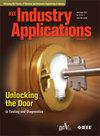基于深度分解机器学习的高渗透太阳能输电负荷分布分解
IF 4.2
2区 工程技术
Q2 ENGINEERING, ELECTRICAL & ELECTRONIC
引用次数: 0
摘要
分布式能源(DERs),特别是太阳能发电(BTM)的日益整合,给区域输电组织(rto)等系统运营商带来了迫切的运营挑战。对于具有大量BTM太阳能注入的单个节点,如何有效、准确地提取传输级实际负荷曲线对RTOs来说非常重要。本文首先阐述了分解单个节点的日实际负荷分布的必要性。进一步,通过选取时间序列特征对节点进行分割,识别出具有显著BTM太阳能发电的节点。最后,提出了一个包含参考节点分解和深度调频节点分解的双层框架,旨在分解出系统操作员需要更多信息的节点负载分布。该模型采用混合深度分解机(Deep Factorization Machine, DeepFM)模型,通过提取同一区域内节点之间的线性和非线性关系以及分区负荷和节点负荷剖面,获得准确的结果。为了克服地面真实性的不足,本文将负载剖面划分为白天、夜间和过零点,并利用后两者进行评估。使用PJM服务领域中真实的、分钟级的、标准化的和匿名的节点数据验证了所提出的分解过程。本文章由计算机程序翻译,如有差异,请以英文原文为准。
Deep Factorization Machine Learning for Disaggregation of Transmission Load Profiles With High Penetration of Behind-the-Meter Solar
The ever-growing integration of distributed energy resources (DERs), especially behind-the-meter (BTM) solar generations, poses imperative operational challenges to system operators such as regional transmission organizations (RTOs). It is important for RTOs to effectively and accurately extract actual load profiles at the transmission level for a single node with significant BTM solar injection. This paper first illustrates the necessity of disaggregating the daily actual load profile of a single node. Furthermore, by segmenting nodes with selected time-series features, nodes with significant BTM solar generation are identified. Lastly, a bi-level framework is proposed, comprising reference node disaggregation and DeepFM nodal disaggregation, aimed at disaggregating the nodal load profiles from which system operators require more information. By adopting a hybrid Deep Factorization Machine (DeepFM) model, the model achieve accurate results by extracting both linear and nonlinear relations between nodes in the same region and the zonal load and nodal load profile. To overcome the lack of ground truth, this paper segments the load profile into daytime, nighttime, and zero-crossing points and utilizes the latter two for evaluation purposes. The proposed disaggregation procedure is validated using real-world, minute-level, normalized, and anonymized nodal data in the PJM service territory.
求助全文
通过发布文献求助,成功后即可免费获取论文全文。
去求助
来源期刊

IEEE Transactions on Industry Applications
工程技术-工程:电子与电气
CiteScore
9.90
自引率
9.10%
发文量
747
审稿时长
3.3 months
期刊介绍:
The scope of the IEEE Transactions on Industry Applications includes all scope items of the IEEE Industry Applications Society, that is, the advancement of the theory and practice of electrical and electronic engineering in the development, design, manufacture, and application of electrical systems, apparatus, devices, and controls to the processes and equipment of industry and commerce; the promotion of safe, reliable, and economic installations; industry leadership in energy conservation and environmental, health, and safety issues; the creation of voluntary engineering standards and recommended practices; and the professional development of its membership.
 求助内容:
求助内容: 应助结果提醒方式:
应助结果提醒方式:


